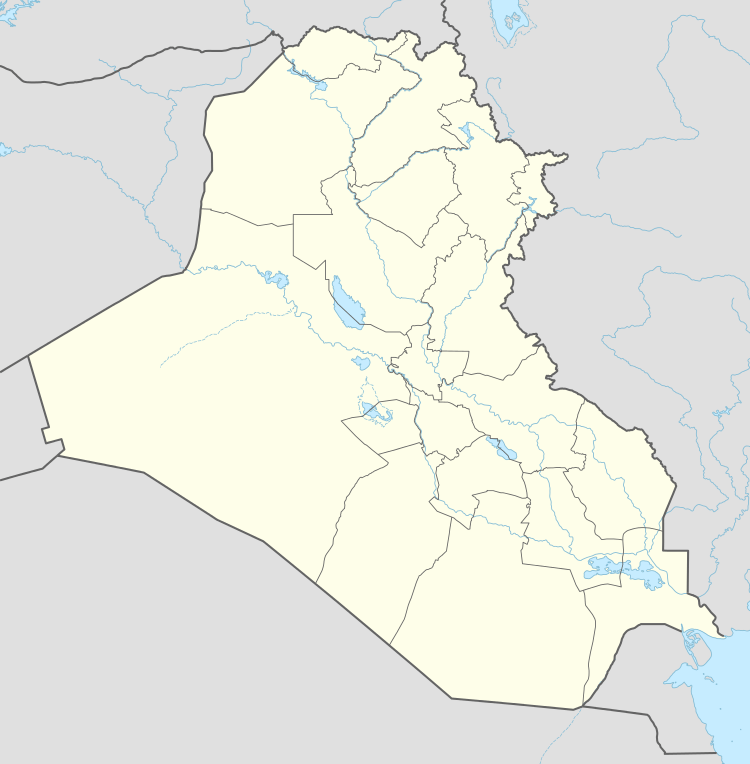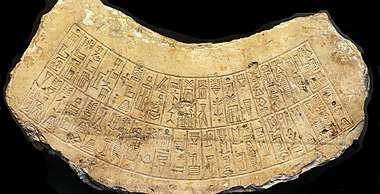Marad
Marad (Sumerian: Marda, modern Tell Wannat es-Sadum or Tell as-Sadoum, Iraq)[1] was an ancient Sumerian tell (hill city) . Marad was situated on the west bank of the then western branch of the Upper Euphrates River west of Nippur in modern day Iraq and roughly 50 km southeast of Kish, on the Arahtu River.
Marad | |
|---|---|
 Marad Location in Iraq | |
| Coordinates: 32°05′34″N 44°47′00″E |
The city's ziggurat E-igi-kalama [2] was dedicated to Ninurta the god of earth and the plow, built by one of Naram-Sin's sons, as well as the tutelary deity Lugalmarada (also Lugal-Amarda).[3] The city fell into the bounds of the Akkadian empire after the conquest of Sargon of Akkad.
History
Marad was established ca. 2700 BC, during the Sumerian Early Dynastic II period.
Archaeology

The site of Marad covers an area of less than 124 hectares (500 acres).
Marad was excavated by a team from Qādisiyyah University in 1990 led by Na'el Hannoon, and in 2005 and 2007 led by Abbas Al-Hussainy.[4][5][6]
Notes
- Sumerian City-States Archived 2007-08-18 at the Wayback Machine
- Dalley, Stephanie (1998) Myths from Mesopotamia: Creation, the flood, Gilgamesh, and others. Oxford University Press ISBN 0-19-283589-0 p324
- sumerian gods
- Naal Hannoon, N/A, Sumer, vol. 49, pp. N/A, 2000
- Al-Hussayny, A., Some Cylinder Seals from the Iraqi Excavations at Marad, Mesopotamia, vol. 45, pp. 65-70, 2010
- Hannun, N., The Ancient City of Marad and the Results of the Exploration at Wanna-wa-Sadoum, Sumer, vol. 49, pp. 63-86, 1997-1998
References
- FS Safar, Old Babylonian contracts from Marad, University of Chicago,1938
- Rients de Boer, Marad in the Early Old Babylonian Period: its Kings, Chronology and Isin's influence, Journal of Cuneiform Studies, vol. 65, pp. 73-90, 2013